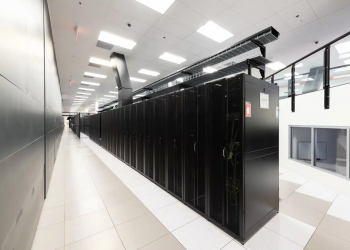Cisco has published the latest Global Networking Trends Report based on a survey of 1,534 IT professionals across 13 countries – last year’s focus was Network as a Service (NaaS).
Responding to disruptions (45%) and accommodating new business needs (40%) were cited in the report as the top network challenges during 2021.
In the report, 46 percent of respondents believe that the top benefit of Network as a Service will be freeing up IT resources to spend more time on strategically important work that drives business-critical transformations, including focus work in collaboration in South Africa’s growing number of hybrid work environments.
Respondents expect that adopting a Network as a Service model will change how they acquire, deliver and manage their networking capabilities.
The report also found:
1. Access to the latest technology:
A major motivation for many IT leaders is that they’ll always have access to the latest networking capabilities and technologies (35%). IT teams that adopt NaaS will no longer have to wait for a full technology refresh cycle.
2. Upskilling employees:
The majority (75%) of IT leaders globally agree or strongly agree that a NaaS approach will give IT teams the opportunities to advance their skillsets and allow them to become innovators.
3. The right time for Network as a Service:
Forty-nine (49%) of IT leaders and 57% of network practitioners believe the best timing and circumstance for NaaS adoption is during a network infrastructure upgrade or refresh, when they are seeking to access innovative technology.
4. A nascent technology that has the ability to drive recovery and growth:
More-than a third of IT leaders (36%) claim to already have NaaS solutions in place, however when quizzed further on it, their definitions were incredibly broad; suggesting that this emerging technology is not yet fully understood.
“In simple terms, NaaS is a cloud-enabled, usage-based consumption model that allows users to acquire and orchestrate network capabilities without owning, building or maintaining their own infrastructure,” says Brendan Cuthbertson, head of Private Sector Sales: Cisco sub-Saharan Africa. “This will prove useful to South African businesses in that it allows IT teams to more easily scale up or down, rapidly deploy new services, and optimise the balance between CapEx and OpEx.”
Looking to new horizons
Given how technology continues to change and enable hybrid work and support digital transformation efforts, this is a benefit for those working within IT. As emerging technologies such as AI, ML, and other applications which rely on cloud-based technology continue to grow, alongside the security requirements to protect them, it is important that IT workers remain skilled in the latest networking technology.
However, today, only 1 in 4 organisations are likely to trust their own IT staff rather than a system integrator, managed service provider, or NaaS vendor to translate their business needs to technical policies.
This links to another set of challenges IT leaders identified. These concerns include whether NaaS can support unseen emerging demands (30%) to loss of security control (26%). The cost and disruption of transitioning also ranks high (28%) on their list of concerns.
“As with any new technology, the best way around these concerns is to introduce them to one domain at a time; measure the success, and then replicate it across the business if it’s found to work.” says Cuthberson.
Cuthbertson concluded by saying: “The as a service (aaS) model has already proved its value in areas such as software, cloud and UC, I am in no doubt that this will revolutionise how networks are deployed and managed. This is set to be an exciting space in 2022 and beyond.”











